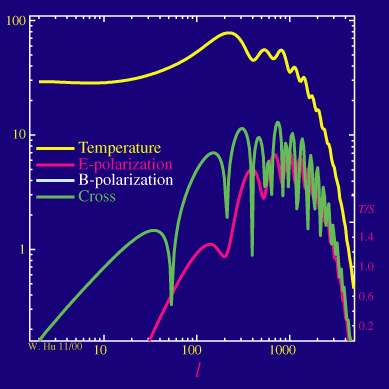
If there were only gravitational waves and no density perturbations in the Universe, the CMB temperature, polarization and temperature-polarization cross power spectra would look like:

Notice that the polarization contains power in both the E and B-modes. That we do see acoustic peaks in the spectrum indicates that this scenario cannot actually be true. At most, gravitational waves contribute a fraction of the power in temperature anisotropies. Adding back in the density fluctuations, the power spectrum as a function of the ratio of power in the gravitational wave (tensor, T) versus density (scalar, S) modes becomes:

For realistic values of this ratio or "T/S", the power in the B-mode corresponds to a tenth of a micro Kelvin signal on scales of l~100.
Needless to say, this signal will be very difficult to detect in the presence of foregrounds and secondary anisotropies that also produce B-modes. The rewards of detecting it are however great. The amplitude and spectrum of the gravitational wave contributions are our best probes of the physics of the inflationary epoch.